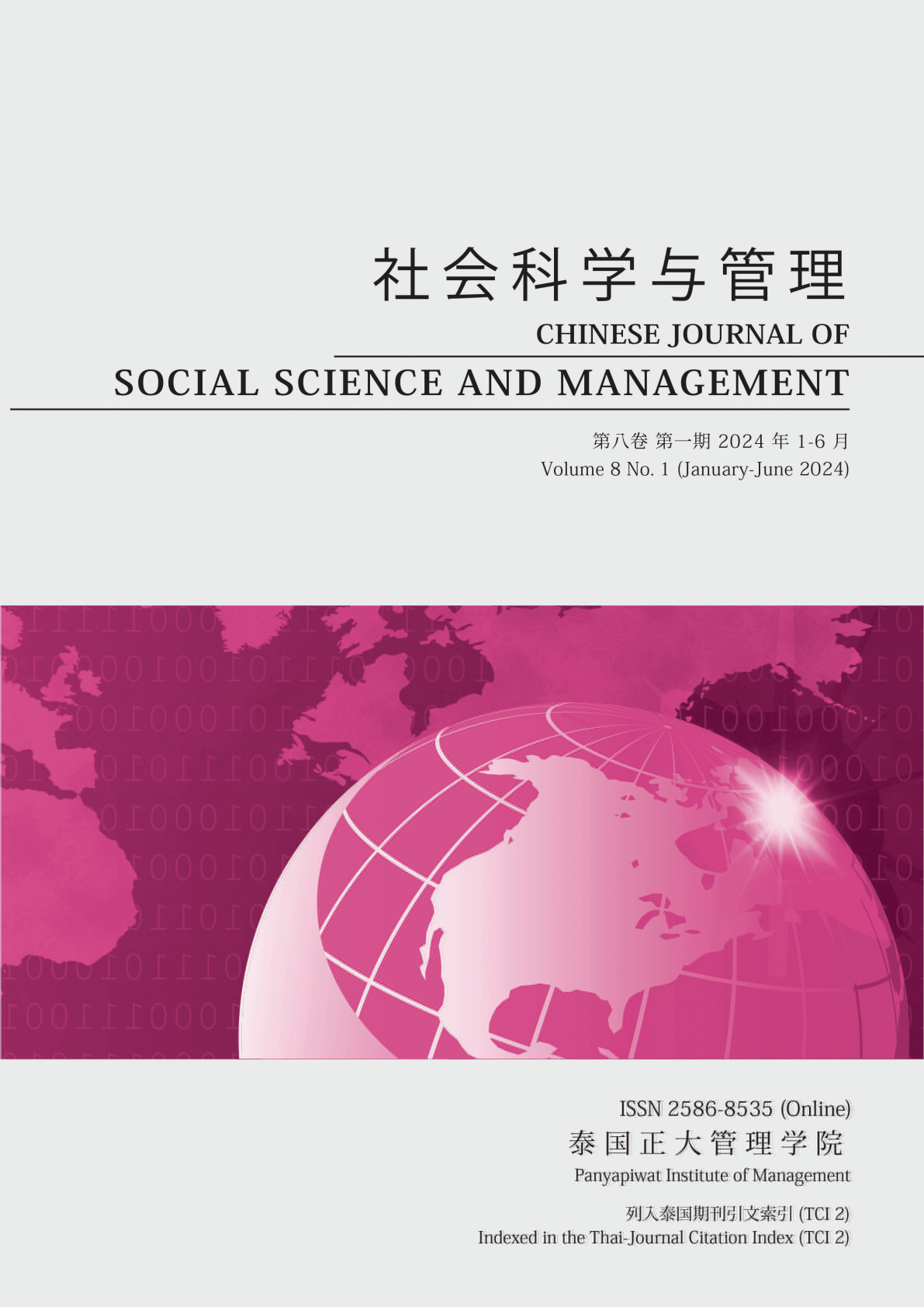THE INTERPRETATION OF THE MODERN CHINESE CHARACTER “LION” FROM A CORPUS PERSPECTIVE
Main Article Content
Abstract
Due to the worldwide boom in learning Chinese, foreigners studying Chinese are putting higher demands on the compilation and functions of Chinese learning dictionaries. Compared with English language dictionaries, Chinese dictionaries have gaps in the number of meaning items and the use of new technologies. Taking the animal noun “lion” (狮) as an example, we searched through all 8,787 items containing the word “lion” from the CCL corpus of Peking University, and analyzed and annotated them one by one. Using the theory of Qualia structure, we analyzed each type of object role of “lion” and revised the meaning of the animal noun definition of “lion” so that the interpretation of the meaning of “lion” was made more scientific. It was also found that two noun meanings for the word “lion” could added to the Chinese dictionary, namely, the definition “a form of folk performance or a prop for folk performance” and the definition “a man-made object shaped like a lion”. Through the Qualia structure, a relatively unified interpretation model was constructed for each type of noun, and corpus technology discovered new items of nouns interpretation, thus enriching the means of compilation of modern Chinese dictionaries, which will make the interpretation more scientific and standardized, and enhance the practicality and comfort of use of the dictionaries.
Article Details

This work is licensed under a Creative Commons Attribution-NonCommercial-NoDerivatives 4.0 International License.
Chinese Journal of Social Science and Management Editorial Division
The Office of Research and Development, Panyapiwat Institute of Management
85/1 Moo 2, Chaengwattana Rd., Bang Talat, Pakkred, Nonthaburi 11120, Thailand
Tel. 02 855 01048 E-mail: cjssm@pim.ac.th
References
Cui, L. (2011). On the interpretation principles and methods of a dictionary of new words in Chinese as a foreign language. Overseas Chinese Education, 4(61), 18-25. [in Chinese]
Feng, H. X., & Lu, D. M. (2011). An examination of the systematic interpretation of animal lexical items in language dictionaries and the optimization of interpretation patterns. Lexicographical Studies, (6), 15-26. [in Chinese]
He, Y. (2020). A study on the interpretation of professional semantic field words in the commercial press learner’s dictionary of contemporary Chinese. Journal of Luohe Vocational Technology College, 7(4), 4-7. [in Chinese]
Pustejovsky, J. (1991). The generative lexicon. Computational Linguistics, 17(4), 409-441.
Research Institute of Language Teaching. (1986). Modern Chinese frequency dictionary. Beijing Language and Culture University Press. [in Chinese]
Song, Z. Y. (2017). The cognitive orientation of generative lexicon: from the perspective of linguistic relevance. Journal of Peking University (Philosophy and Social Sciences), 54(2), 151-160. [in Chinese]
Weng, X. L. (2014). The rhetorical guidelines of the meta-language of the Chinese learning dictionary: A discussion on the paraphrasing meta-language of the chinese dictionary of business pavilion learning. Contemporary Rhetoric, 5(185), 84-90. [in Chinese]
Xia, L. X. (2009). Research on the publication and users of CFL learner’s dictionaries. Publishing Journal, 17(1), 65-69. [in Chinese]
Xia, L. X. (2013). Definition-related problems in commercial press learner’s dictionary of contemporary Chinese and possible solutions. Journal of Yunan Normal University (Teaching and Research on Chinese as a Foreign Language Edition), 1(11), 44-48. [in Chinese]
Xie, H. J. (2012). Several issues on the interpretation of Chinese cultural dictionaries. Lexicographical Studies, (3), 15-23. [in Chinese]
Yuan, Y. L. (2014). On a descriptive system of qualia structure of Chinese nouns and its application in parsing complex Chinese grammatical phenomena. Contemporary Linguistics, 16(1), 31-48. [in Chinese]
Zhang, Y. H. (2011). An investigation on the problems in the definitions in chinese dictionaries for international learners: Based on a contrastive study of EFL and CFL lexicography. Chinese Teaching in the World, 1(25), 120-128. [in Chinese]


